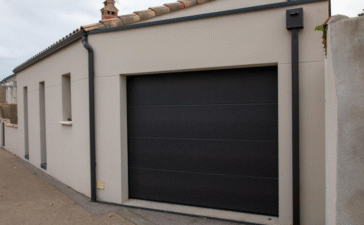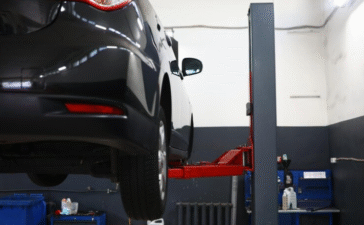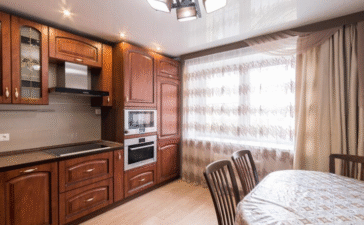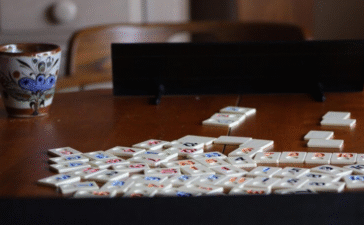When it comes to adding timeless charm and rustic elegance to a home, few materials can rival the appeal of Saltillo tile. Originating from Saltillo, Coahuila, Mexico, this handmade terracotta tile has been a centerpiece of Mexican craftsmanship for centuries. With its clay-rich hues, natural imperfections, and artisanal quality, Saltillo tile is making waves in interior design, particularly in bathroom spaces.
Its rise in popularity is fueled by homeowners and designers seeking distinctive ways to add character to their bathrooms while maintaining warmth and functionality. This article will guide you through everything you need to know about Saltillo tile—from its benefits and design inspiration to installation tips, maintenance insights, and alternatives.
What is Saltillo Tile?
Saltillo tile gets its name from its place of origin, the town of Saltillo in northern Mexico. The artisans in this region have perfected the craft of creating this beautiful tile using time-honored traditions passed down through generations. Made from clay harvested from the region’s riverbeds, Saltillo tiles are molded by hand, sun-dried, and then kiln-fired to produce their characteristic appearance.
There are different variations of Saltillo tile, each offering unique aesthetics. Traditional Saltillo tile features warm earth tones such as red, orange, and yellow, perfect for rustic and Mediterranean design schemes. Manganese Saltillo tile introduces darker, smokier shades for a more contemporary look, while Antique and Spanish Mission styles add aged finishes that exude history and character.
What makes Saltillo tile distinctly desirable is its natural imperfections. Variations in color, texture, and shape give it unparalleled authenticity and charm. These unique characteristics ensure that no two tiles are exactly alike, making each installation truly one of a kind.
Is Saltillo Tile Good for Bathrooms?
Saltillo tile offers many advantages for bathroom spaces, starting with its warm and inviting appearance. Unlike colder ceramic or porcelain tiles, this handmade terracotta tile brings a cozy, rustic aesthetic that can transform a bathroom into a soothing sanctuary. Its natural matte finish also adds texture, making it slip-resistant compared to polished surfaces.
However, Saltillo tile does have its challenges, primarily linked to its porous nature. Without proper sealing, it may absorb moisture, leading to staining or weakening over time. Still, these concerns are easily mitigated through sealing and maintenance, making it practical for bathroom use.
It’s often misunderstood that Saltillo tile is slippery when wet or outdated in its design. Modern sealing methods and anti-slip treatments can effectively address safety concerns. Additionally, its versatility allows it to complement modern, bohemian, or Mediterranean aesthetics seamlessly.
Bathroom Design Ideas Using Saltillo Tile
Saltillo tile is a playground for creative bathroom designs thanks to its rich color palette and versatile shapes. You can pair its warm terracotta tones with neutral color schemes to create a harmonious and understated look. To bring a pop of vibrancy, consider accenting with teal, sage green, or a deep cobalt blue. Natural wood finishes, rattan textures, or brass fixtures further elevate its rustic charm.
Saltillo tile also offers an array of layout options to cater to your aesthetic preferences. Hexagonal tiles bring a contemporary twist, while square or Riviera patterns exude traditional Mediterranean elegance. Whether you are designing a sleek modern bathroom or a cozy farmhouse retreat, Saltillo tile effortlessly adapts to different styles.
To merge modern and vintage elements, pair Saltillo tile with white walls, minimalist vanity units, and sleek fixtures. For an authentic Mediterranean vibe, complement it with patterned cement tiles or colorful mosaics.
How to Install Saltillo Tile in a Bathroom
Proper installation is crucial to ensuring Saltillo tile performs well in bathroom environments. One of the first decisions is whether to use pre-sealed or raw tiles. While pre-sealed tiles simplify installation, raw tiles provide more flexibility regarding customization and finish.
Begin by preparing the subfloor to ensure a stable, moisture-resistant foundation. Use an appropriate underlayment to prevent any water damage. Keep in mind that Saltillo tiles are often irregularly shaped, so grout spacing is critical for achieving the desired layout and maintaining a cohesive design.
Finally, decide whether to install the tiles yourself or hire a professional. While DIY enthusiasts might enjoy the challenge, working with a Saltillo tile specialist can guarantee a flawless installation and save you time.
How to Seal and Maintain Saltillo Tile
Sealing Saltillo tile properly is non-negotiable when installing it in a bathroom. Start with a penetrating sealer to fill the tile’s pores and protect it from moisture. Follow up with a surface sealer to enhance its durability and aesthetics. For bathrooms, consider using waterproof sealers with anti-slip additives for added safety.
When it comes to cleaning, avoid harsh chemicals or abrasive tools. Instead, use a damp cloth or mop with a pH-neutral cleaner to maintain the tile’s finish. Over time, you may need to reseal the tiles based on wear and tear. A resealing schedule every 2–4 years is typically recommended for bathroom applications.
Saltillo Tile Costs: What to Expect
The beauty of Saltillo tile doesn’t come at an exorbitant price, but it’s essential to plan your budget. The cost per square foot depends on whether you choose raw or pre-sealed tiles, with prices typically ranging from $3 to $6. Professional installation may add $5 to $8 per square foot to your expenses.
While Saltillo tile might have a higher upfront cost compared to standard options, its longevity and timeless appeal make it a worthwhile investment, especially for those passionate about handcrafted specialties.
Alternatives to Saltillo Tile
If you love the look of Saltillo tile but are concerned about its maintenance demands, there are alternatives to consider. Porcelain tiles with a Saltillo-like finish offer a lower-maintenance option while mimicking terracotta’s earthy tones. Cement tiles provide another durable substitute, though they lack Saltillo’s handmade charm.
Each alternative has its pros and cons, but the authenticity of natural Saltillo tile remains unmatched.
Is Saltillo Tile Right for Your Bathroom?
To decide whether Saltillo tile is the best choice for your bathroom, consider your design goals, maintenance tolerance, and budget. If you value artistry, warmth, and rustic charm, Saltillo tile is a fantastic choice. However, it requires commitment to proper care and upkeep, particularly in wet environments.
With positive testimonials from homeowners and experts alike, Saltillo tile continues to hold its place as a top choice for rustic and Mediterranean bathroom designs.
You would also ike: “green tile bathroom“
Final Thoughts: A Tribute to Timeless Craftsmanship
Saltillo tile embodies more than just a flooring material; it’s a piece of craftsmanship steeped in tradition. Its ability to blend beauty and functionality makes it a remarkable choice for bathrooms. Although it demands thoughtful installation and regular maintenance, the payoff is a stunning, durable, and uniquely personal space.
Looking to explore Saltillo tiles further? Consult a tile expert or visit a showroom to see these handcrafted wonders in person. No matter your decision, you’re investing in a timeless aesthetic that adds character to any bathroom.












